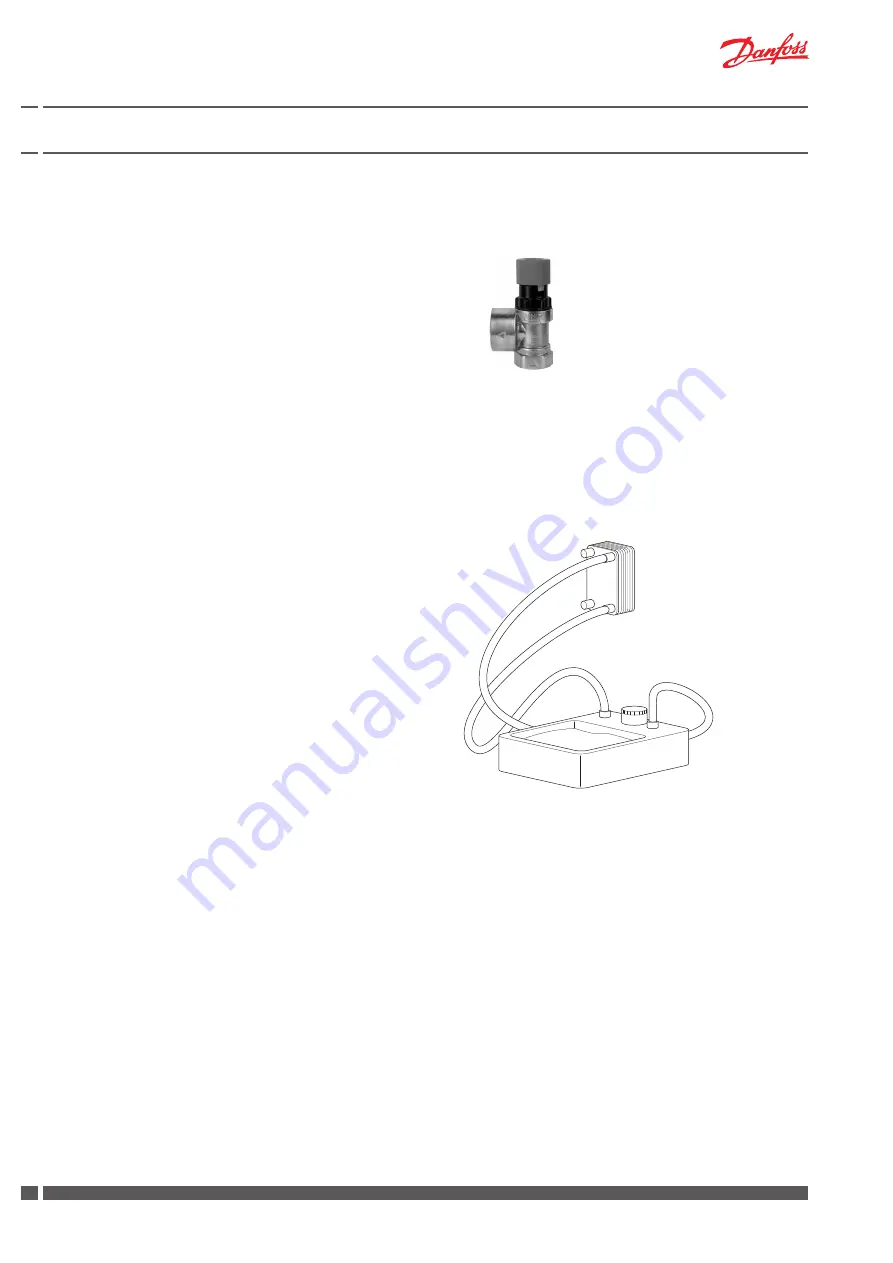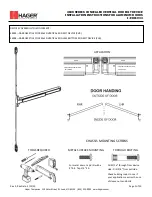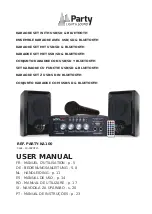
50 DKDHR
VI.GP.P1.02
Danfoss District Energy
Instructions
VX Solo II
13.0 Maintenance
Maintenance work
Is only to be carried out by qualified and authorised personnel.
Inspection
The operator or other authorised personnel is obliged to perform in-
spections at regular intervals and if necessary carry out maintenance
work according to these and other instructions. Within the scope of the
above maintenance work all strainers should be cleaned, all connections
should be tightened and the operation of the safety valves should be
checked by turning the valve head in the indicated direction.
Rinsing/cleaning of plate heat exchanger
Brazed heat exchangers can be rinsed. For optimum cleaning the flow
rate should be a min. of 1.5 times normal flow rate, preferably in back-
flush mode. This will remove any deposits formed on the inside of the
plate heat exchanger. In case of more serious deposits, a cleaning liquid,
approved by Danfoss (f.ex. Kaloxi or Radiner FI) can be pumped through
the heat exchanger. Both are environmentally friendly cleaning fluids
and can be disposed of through the usual domestic sewerage system.
Afterwards rinse thoroughly with large amounts of water.
Deacidification of plate heat exchanger
After long operation, because of the relatively high temperatures in
the plates or tubes, the heat exchangers are expecially subject to
calification. Any deacidification of the plate heat exchanger is done as
shown on the drawing to the right. For brazed plate heat exchangers
weak inhibited acid solutions (e.g. 5% formic, acetic or phosphoric acid)
may be used.
Measures after maintenance work
After maintenance work and before switching the system on again:
– Check that all screwed connections are tight.
– Check that all safety features, covers, that were removed, have been
replaced properly.
– Clean the working area and remove any spilled materials.
– Make sure that all tools, materials and other quipment that were
used, have been removed from the working area.
– Connect to energy supply and check for leaks.
– Vent the system.
– If necessary adjust the system again.
– Make sure that all safety features on the device and the system work
properly.
For the janitor or other supervisors
Meter reading
It is recommended to read the heat meter at regular intervals, and to
write down the meter readings.
Cooling / Return temperature reading
The cooling, i.e. the temperature difference between district heating
supply and district heating return is of great importance for the total
heat economy. It is therefore very important to observe the supply
and return temperatures. Normal temperature difference is 30-35 °C.
Please note, that the lowest district heating return temperature is di-
rectly dependent on the return temperature from the heating circuit
and the cylinder circuit. Therefore, please observe these return tem-
peratures.
Tightening of connections
When reading the heat meter, all fittings and connections should be
checked for leaks. If leaks are detected, contact qualified and authori-
zed personnel immediately.
Please note that the connections may be supplied with EPDM rub-
ber gaskets - in general connection sizes from ¾” to and incl. 1½”
for Kompakt H stations. Therefore take care not to overstrain the
union nuts, as this may result in leaks. The manufacturer accepts
no liability for leaks that result from overstrain of union nuts.






































